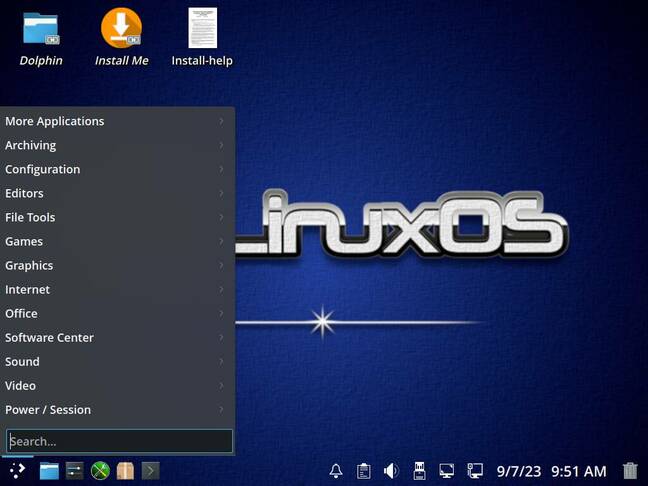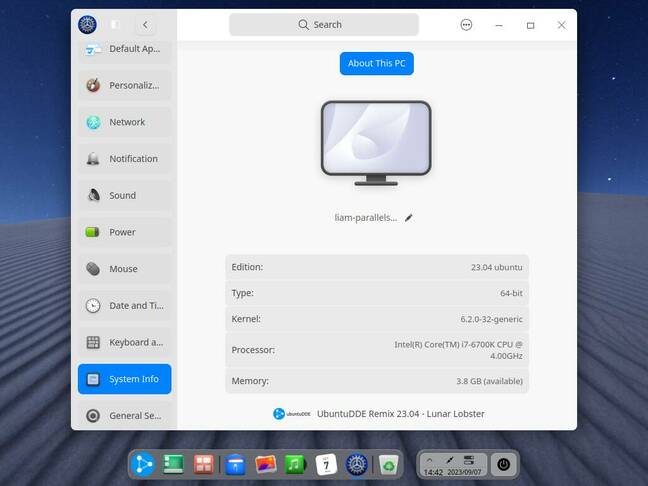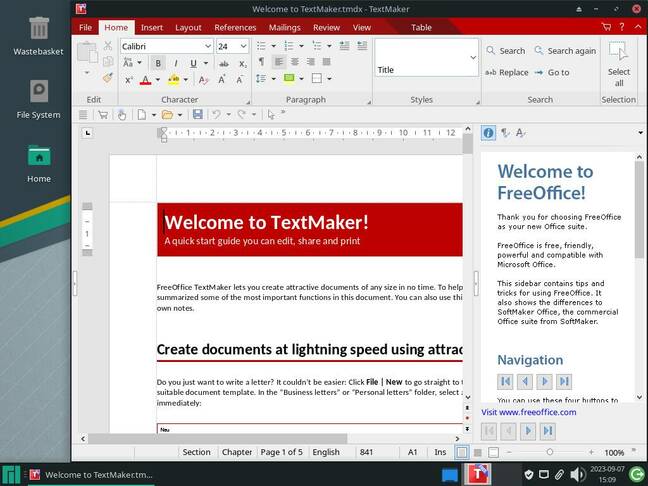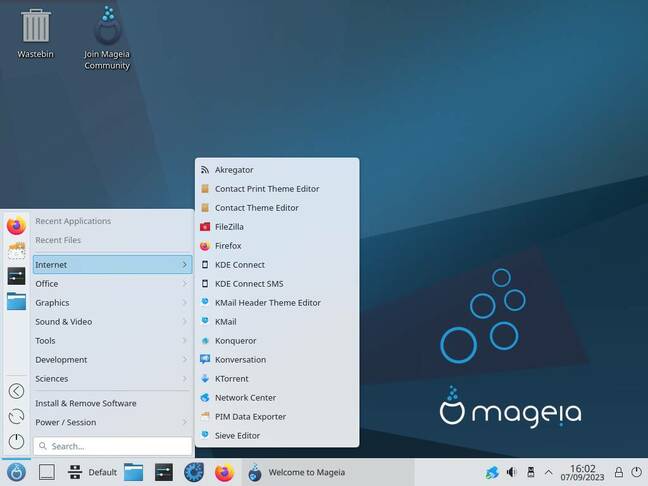Linux distros drop their feelgood hits of the summer
A quiet period for the IT industry is a good time to rebuild and refresh, apparently
Taking advantage of the summer lull, there are new versions of a slew of distros: Nitrux, Ubuntu DDE, Linux Lite, Manjaro, and siblings Mageia, OpenMandriva and PCLinuxOS.
Nitrux
Nitrux 3.0 is a major release of the only distro we've seen that's come out of Mexico. We looked at release 2.5 late last year and came away impressed. It is very unlike most other distros and hides most of the conventional packaging tools too. It has its own radical UI, based on KDE technology, but is its own thing, which deconstructs the familiar desktop – for instance, the window controls are in the top panel.
Its release cycle is non-traditional as well. The new major version number suggests a big change, but in fact two of its significant features appeared in the last two point releases. In version 2.8, it gained a system update tool, called nuts. This adds the important feature of updating the entire installed OS, but it doesn't use the underlying packaging tool to do so. In version 2.9, it also gained a new fast reboot tool, called kboot.
Ubuntu DDE
The Ubuntu DDE project has been updated after an interval of more than a year with a 23.04 release. The project skipped the 22.10 release cycle, and is just now catching up with Ubuntu's interim release from April even though Ubuntu 23.10 is now imminent. We looked at the previous release last September, which also lagged nearly six months behind its upstream base.
Ubuntu DDE 23.04 puts the May 2023 release of the Deepin Desktop Environment, from one of the leading Chinese distributions, on top of the underlying Lunar Lobster OS. DDE is one of the most colorful and attractive desktops around, and for our money it looks much prettier than even the more bling-tastic Western desktops such as Budgie or Enlightenment. Although it comes with a collection of its own apps, and they look good, they are functionally a little weak. Music only handles local files, with no streaming support; Calendar similarly can't attach to a shared diary over the network, and so on.
Even so, it's modern and pretty, and there's nothing wrong with eye candy, especially since many distros seem to compete on how monochrome they can be. Many people are justifiably skeptical about running Chinese distros, but the combination of a shiny Deepin desktop on top of the well-known basis of Ubuntu should allay such concerns. The project needs to speed up its release cycle if it ever aspires to become an official flavor, though. Lunar reaches its end of life in January.

Ubuntu DDE 23.04's login screen reveals that, contrary to what you might believe, The Reg FOSS desk is a raccoon
Linux Lite
Also based on Ubuntu is Linux Lite 6.6, coming roughly half a year after version 6.4 which we looked at in April. Although the release announcement boldly says:
This is one our largest releases on record since we began in 2012.
Even so, surprisingly this Xfce-based distro does not include the latest Xfce 4.18. The focus in version 6.6 is localization – this version has been translated into Afrikaans, Arabic, simplified Chinese, Croatian, Dutch, Finnish, French, German, Hebrew, Hindi, Italian, Japanese, Korean, Persian, Polish, both European and Brazilian Portuguese, Russian, Serbian, Spanish, Swedish, and Ukranian.
- Fedora and Asahi Linux pals revamp installation process
- ArcaOS 5.1 gives vintage OS/2 a UEFI facelift for the 21st century
- antiX 23: Anarchic for sure, but 'design by committee' isn't always the best for Linux
- FreeBSD can now boot in 25 milliseconds
Manjaro
Version 23 of Manjaro, code named "Uranos," is the latest update to one of the more popular Arch-based derivatives. This release comes with GNOME 44, Xfce 4.18, and KDE Plasma 5.27 with the latest KDE Gear 23.08 suite of KDE-based accessory apps. We last looked at Manjaro 21.3 in June 2022 and we weren't as impressed with this "easier Arch than Arch" as we were with Garuda Linux. One of the more distinctive aspects of this distro is that it offers the choice of LibreOffice or FreeOffice from SoftMaker.
The Mandrake family
Mageia 9 is the latest version of one of the main offshoots of the Mandrake/Mandriva family. This release boasts a smaller install than it has in years, which is a welcome change, and comes with the latest kernel 6.4. It has also updated its packaging tools, and comes with RPM version 4.18 which changes the package database format to SQLite.
It installed easily enough in a VM, although the installation process asks a lot of questions, especially compared to the new Fedora installer. Another aspect that strikes us as a bit 20th century is its use of a separate root account.
The rolling-release Rome edition of the other Mandriva descendant, OpenMandriva, has also been updated. OpenMandriva Rome 23.08 is out, including a preview of the unfinished KDE Plasma 6.0. This is also a candidate for the next release of the stable edition, OpenMandriva Lx 5.0. For now, that is still on version 4.3.

PCLinuxOS's KDE edition is somewhat stripped back, which we like, and especially useful as live image
There's also a new update to what now calls itself "the Boomer Distribution," PCLinuxOS 2023.08. As usual, there are KDE, MATE, and Xfce editions, but only the KDE edition offers both Full and Lite variants. Maintainer Bill "Texstar" Reynolds continues to plow a lonelier furrow with PCLinuxOS, which is significantly different under the desktop level. It still uses the traditional sysvinit and the RPM-based version of APT, APT4RPM, which is the main feature still surviving from Conectiva, the Brazilian distro vendor which Mandrake acquired to form Mandriva.
We don't know what the artistic differences are between Mageia and OpenMandriva, but they continue to pursue very similar goals and we still feel that they should try to settle their differences and cooperate. ®



